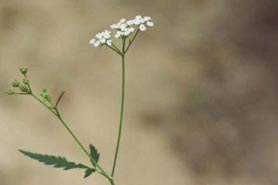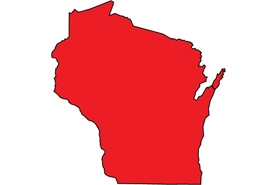Spreading hedgeparsley
(Torilis arvensis)
Herbaceous biennial in the carrot family. Flowering plants have erect, ridged, branched stems and grow 2-6’ tall.
Other names for this plant include:
- Common names: Canada hedge parsley, hedge parsley
- Scientific names: Torilis arvensis ssp. arvensis
Classification in Wisconsin: Prohibited
- Ecological Threat
-
- Hedgeparsleys invade forests, grasslands, hedgerows, roadsides, and urban areas.
- Pets, such as dogs and other animals, appear to be spreading hedge parsley quickly throughout the state.
- Identification
-
First-year plant leaves are Low, parsley-like rosettes that stay green until late fall.
Second-year plant leaves: Leaves are alternate, compound, fern-like, 2-5 inches long and slightly hairy.
Flowers: Flowers are tiny, white and grow in small, loose, flat-topped umbels without bracts at the base. Plants bloom July-August.
Fruits & seeds: Small seeds are covered in hooked hairs attached to clothing and fur.
Roots: Taproot.
Similar species: Japanese hedge parsley (Torilis japonica; invasive) has two or more pointed bracts at the base of each umbel. Otherwise the two plants are very much the same. In general, there are many white-flowered look-alikes in the parsley family. One example is Queen Anne’s lace (Daucus carota; non-native), a widespread weed in Wisconsin, with similar fern-like leaves, but leaves and stems are hairy. When crushed, it smells like carrots. Other look-alikes include wild chervil (Anthriscus sylvestris; invasive), caraway (Carum carvi; non-native), poison hemlock (Conium maculatum; invasive), and Chinese hemlock parsley (Conioselinum chinense; native). The native sweet cicely (Osmorhiza spp.) may also be mistaken for the hedge parsley.
- Control
-
Mechanical: Pull or mow before flowering.
Chemical: Treat foliage with glyphosate, triclopyr or metsulfron-methyl in early spring or on plants that are resprouting after being cut.
- Resources
- Sources for content:
- Czarapata, Elizabeth; Invasive Plants of the Upper Midwest: an illustrated guide to their identification and control. The University of Wisconsin Press. 2005. Pg. 140


